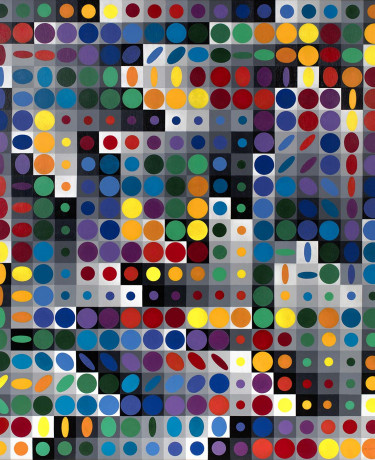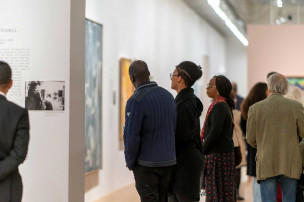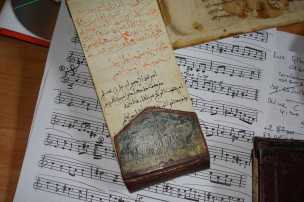
Paris and Nowhere Else
The exhibition Paris et nulle part ailleurs (Paris and Nowhere Else) immerses the public in the years of post-war tumult that saw the emergence of new artistic visions, in the fields of abstraction, figuration and kinetic art, between 1945 and 1972.

In the first half of the 20th century, Paris was the world capital of the arts, a hotbed for avant-garde movements, attracting artists and intellectuals from across the world. After World War 2, despite the increasing appeal of New York, Paris and – for many people – nowhere else, was still the place you had to go to be trained, to create, to exhibit, to compare your work with that of others, to write the very history of art.
The exhibition
Of the 15,000 artists active in Paris at this time, 60 to 65% of them were foreigners. Whether they spent a few months, a few years, left and came back, or settled there definitively, why did these artists come? How was their work impacted by this change in environment, how does it express that? Are their migratory paths similar to those of their compatriots? Paris et nulle part ailleurs examines 24 artists of various origins (Europe, Africa, Latin America, USA, Asia) who came to Paris and whose work helps us grasp the key issues of migration.
Organised into four themes: going into exile, blending home culture and host culture, reacting to the strangeness of the world they were discovering, building a universal language without borders, the exhibition covers the motivations for leaving, the experience of settling in, socializing, and a sometimes difficult everyday life in a more or less welcoming and cosmopolitan city, now their new home..
The exhibition features around one hundred works from private and public collections - drawings, sculptures, paintings, collages - by Shafic Abboud (Lebanon), Eduardo Arroyo (Spain), André Cadere (Romania), Ahmed Cherkaoui (Morocco), Carlos Cruz-Diez (Vénezuela), Dado (Montenegro), Erró (Iceland), Tetsumi Kudo (Japan), Wifredo Lam (Cuba), Julio Le Parc (Argentina), Milvia Maglione (Italy), Roberto Matta (Chile), Joan Mitchell (USA), Véra Molnar (Hungary), Iba N’Diaye (Senegal), Alicia Penalba (Argentina), Judit Reigl (Hungary), Antonio Seguí (Argentina), Jesús Rafael Soto (Venezuela), Daniel Spoerri (Romania), Hervé Télémaque (Haiti), Victor Vasarely (Hungary), Maria Helena Vieira da Silva (Portugal), Zao Wou-Ki (China).
Exhibition commissioner
Jean-Paul Ameline
Jean-Paul Ameline was a curator at the Musée National d’Art Moderne Centre Pompidou in Paris. He subsequently worked as a general curator of Heritage in 2003 and head of the Modern Collections department until 2013. He has been the commissioner for many exhibitions including Face à l’Histoire. L’artiste moderne devant l’événement historique 1933-1991 (1996), and also Paris du Monde entier (l’artiste étranger à Paris 1900-2005) for the National Art Center in Tokyo in 2007.
Chloé Dupont
She is an exhibition assistantin the Musée National de l'Histoire de l'Immigration. She has a degree in art history from the University of Grenoble and in museology from the École du Louvre. She has participated in the preparation of several exhibitions at the Musée d'Orsay, the Petit Palais and the Musée Cernuschi.
Au programme
- Tout public
- Jeunes publics
- Scolaires
- Chercheurs














